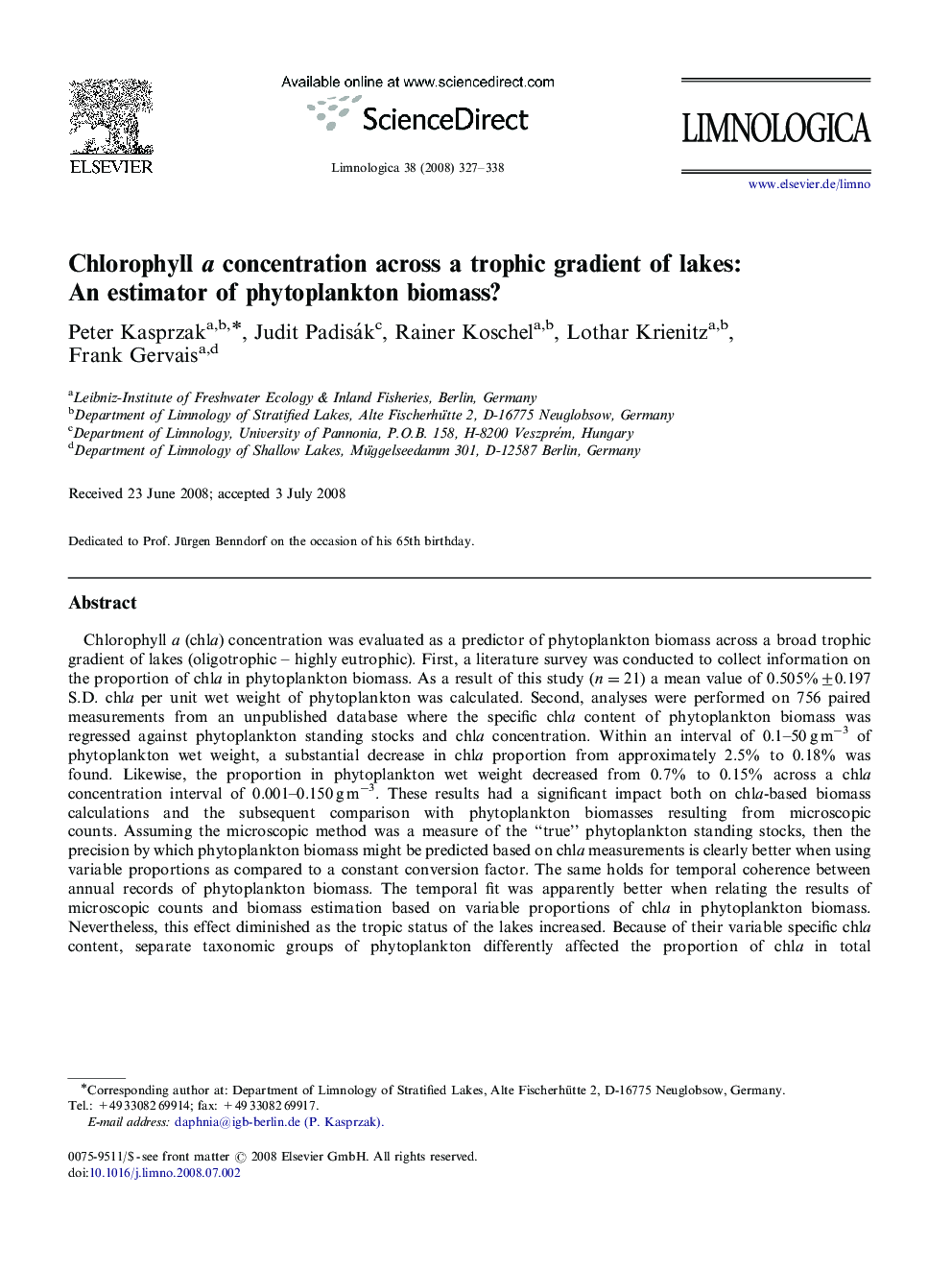| Article ID | Journal | Published Year | Pages | File Type |
|---|---|---|---|---|
| 4400690 | Limnologica - Ecology and Management of Inland Waters | 2008 | 12 Pages |
Chlorophyll a (chla) concentration was evaluated as a predictor of phytoplankton biomass across a broad trophic gradient of lakes (oligotrophic – highly eutrophic). First, a literature survey was conducted to collect information on the proportion of chla in phytoplankton biomass. As a result of this study (n=21) a mean value of 0.505%±0.197 S.D. chla per unit wet weight of phytoplankton was calculated. Second, analyses were performed on 756 paired measurements from an unpublished database where the specific chla content of phytoplankton biomass was regressed against phytoplankton standing stocks and chla concentration. Within an interval of 0.1–50 g m−3 of phytoplankton wet weight, a substantial decrease in chla proportion from approximately 2.5% to 0.18% was found. Likewise, the proportion in phytoplankton wet weight decreased from 0.7% to 0.15% across a chla concentration interval of 0.001–0.150 g m−3. These results had a significant impact both on chla-based biomass calculations and the subsequent comparison with phytoplankton biomasses resulting from microscopic counts. Assuming the microscopic method was a measure of the “true” phytoplankton standing stocks, then the precision by which phytoplankton biomass might be predicted based on chla measurements is clearly better when using variable proportions as compared to a constant conversion factor. The same holds for temporal coherence between annual records of phytoplankton biomass. The temporal fit was apparently better when relating the results of microscopic counts and biomass estimation based on variable proportions of chla in phytoplankton biomass. Nevertheless, this effect diminished as the tropic status of the lakes increased. Because of their variable specific chla content, separate taxonomic groups of phytoplankton differently affected the proportion of chla in total phytoplankton wet weight. Chlorophyceae, Cryptophyceae and cyanobacteria had a high impact, while Bacillariophyceae, Dinophyceae and Chrysophyceae were of lesser importance.
